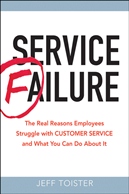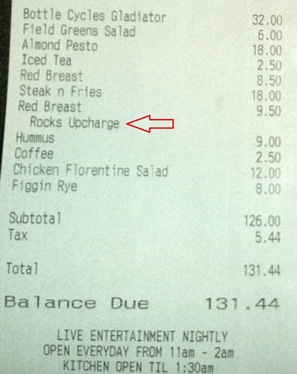Move the start and finish line for customer service training
 Jeff Toister
Jeff Toister  Thursday, July 12, 2012 at 12:00PM |
Thursday, July 12, 2012 at 12:00PM | I've spoken to countless managers who have described a similar experience after sending their employees to customer service training. They observe a temporary bump in motivation and performance followed by a gradual settling down back to pre-training service levels. When this happens, the training might make everyone feel good in the short-term, but over the long-run it proves to be a waste of time and money if it doesn't help the team measurably improve their performance.
If you've experienced this challenge, a simple fix might be moving the training program's start and finish line to their proper place.
The Start Line
It's hard to find something if you don't know what you are looking for, or even why you are looking for it. However, this is what happens when employees attend a customer service training class without having done any pre-work or preparation. In the worst scenarios, employees may even regard the training as unnecessary or even a punishment if they don't have an understanding of what new skills they are supposed to learn or how it will help them provide better service.
The solution is to move the start line back a bit to include adequate time for preparation. Employees should be able to answer three basic questions by the time they arrive for the class:
- What is the training about?
- How will this class help me do my job?
- How can I apply what I learn back on the job?
You can read more about the three questions here.
The Finish Line
Learning new skills shouldn't be the end-game for customer service training. The real goal should be learning new skills that can be applied on the job to achieve better results. Unfortunately, too many customer service training initiatives end at the same time the class does. No support, no follow-up, and perhaps no further mention. When this happens, it's no wonder that employee performance quickly returns to pre-training levels.
The real finish line should be when the training program's goals have been achieved. This means building in post-training support and follow-up to help participants master the skills they learned in class and make adjustments as they continue their development. (It also means setting goals - learn more here.)
Workshop Planner
I often use a simple workshop planning tool to make sure the start and finish lines are in their proper place. I meet with project stakeholders and complete the worksheet before starting any training program and use it to help them prepare their employees for a successful class and create an action plan to reinforce learning once the workshop is complete.
![]() Download a sample workshop plan
Download a sample workshop plan
You can also watch this short how-to video:





